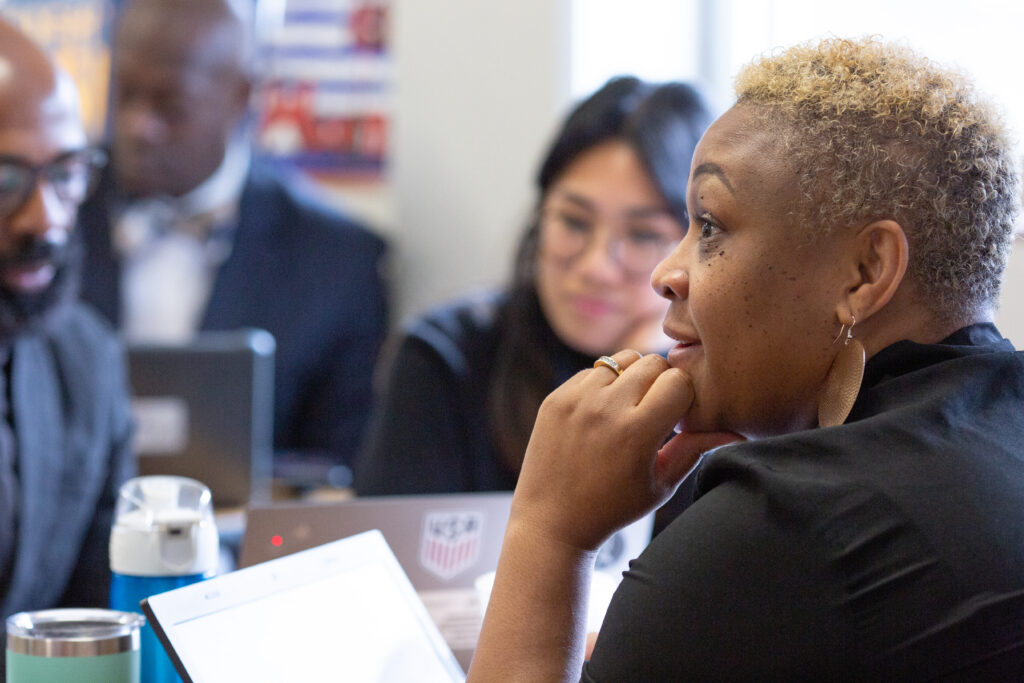Credit: Allison Shelly for American Education
I started my professional life as a server at the Marriott. I was looking forward to a career in the hospitality industry, but I also wanted to use my degree in biology and my love of science, so I decided to substitute teach.
During my first week in the classroom, one of my students said, “Mr. Z, we have learned more from you in the last three days than in the previous two weeks.”
That’s when I knew I wanted to become an educator.
My research into teacher preparation programs left me discouraged. Their cost was a major barrier for me, as it is for many other aspiring teachers of color. Then I found out about the Golden State Teacher Grant (GSTG) program, which provides teachers of color with the opportunity to pursue a career in education tuition-free. I would never have been able to afford my master’s degree and teaching credential had it not been for this program.
With this grant, I was able to receive my master’s and credential within one year, allowing me to step into the classroom and diversify the space that much faster. This is important because 20% of California’s students identified as students of color, while 61% of teachers identified as white. (The comparison is as of 2018-19, the last year that the California Department of Education published statewide teacher demographic data). Research shows that teachers of color have a positive effect on the pupils we serve. I have seen this in my own teaching. My high school chemistry classes are 85% students of color. One of my students, Nayleya, wrote to me, “I hated coming to school and I just felt like there was no point to it. I felt like the other teachers were just trying to control us and, in a way, treat us like robots, but you don’t. You listen to what we are having problems with and try your hardest to help.”
The Golden State Teacher Grant came with a comprehensive level of support, ensuring my success in the program and in the classroom. When I was working on my final project, a chemistry unit plan, my professors provided ongoing mentorship. I was able to resubmit my assignments until I reached mastery in my content area. This informed my teaching practice; I now give my students multiple opportunities to resubmit their assignments until they too reach mastery of the learning target. This has motivated students like Nayleya to work harder, even if she found the lesson challenging, because she knows I am backing her up every step of the way, in the same way my professors supported me.
I know that the Golden State grant worked for me as it has for many of my colleagues. However, to really know how many teachers of color are entering the profession, the programs they graduate from, the districts and schools they are teaching at, we need much more information than just personal experience. This is even more pressing now as the Legislature is considering addressing current budget shortfalls by clawing back funds from some of the teacher training programs, like the Golden State Pathways Program, teacher and counselor residency grants and national board certification grants, without understanding their impact. We need comprehensive data on the effectiveness of programs like the Golden State Teacher Grant to ensure that our investments in them are working, and policymakers have the information they need to make informed budget decisions.
Our Legislature is now debating a bill that will do just that. Senate Bill 1391, authored by Sen. Susan Rubio, would require the state to develop a dashboard with information on teacher training pipelines, credentialing, hiring and retention. Having a comprehensive data dashboard would also help us anticipate any challenges that arise from recruiting to preparing and retaining a diverse workforce. Imagine the improvements we could make to how we prepare and support teachers if we knew what programs were effective, and what worked and what didn’t.
I love teaching and I love my students. I want other people of color to pursue a career in education and find the passion and rewards that come with mentoring young scholars. Let’s make sure we have the data to help sustain and diversify our workforce, for the benefit of all our students.
•••
Omar Zamarripa is a ninth and 10th grade science teacher at Port of Los Angeles High School in San Pedro. He is a 2023-24 Teach Plus California Policy Fellow.
The opinions expressed in this commentary represent those of the author. EdSource welcomes commentaries representing diverse points of view. If you would like to submit a commentary, please review our guidelines and contact us.

